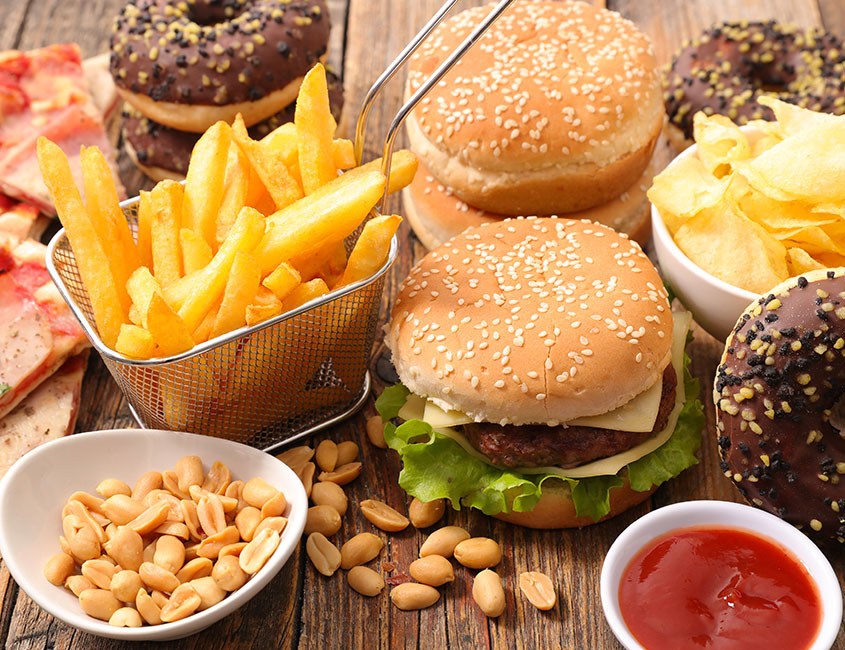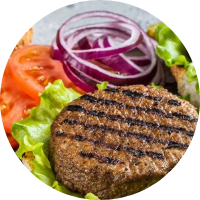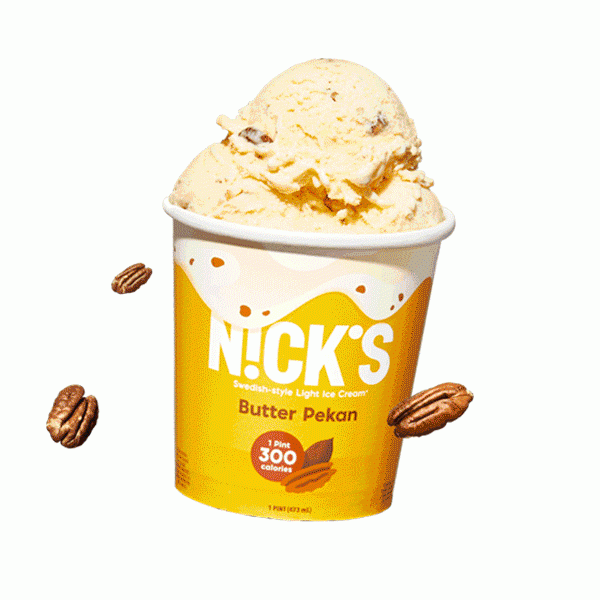LET'S MAKE FOOD BETTER—TOGETHER.
Discover fat alternative EPG at Expo West
Calling all better-for-you-food brands (and brands that want to be better): Plant-based fat alternative EPG may be your missing ingredient. Find out—when you visit us at Expo West. We’d love to meet and discuss how EPG can fit into your formulation—lowering calories and saturated fat while maintaining (or even improving) taste and mouthfeel. Some of the most buzzed-about brands are already in the know. And with almost 40 million servings already consumed, their customers are coming back for more. Click below to schedule a meeting at or after the show, or scroll to learn more.

ALL ABOUT EPG
EPG fills a critical technical and commercial void: it improves the nutritional profile of foods (by reducing calories and saturated fat) without compromising the taste, texture and mouthfeel of the foods we love. In fact, in some foods, it actually improves those sensory attributes.

EPG is a modified plant-based oil made from rapeseed oil (healthier and more sustainable than commonly used coconut and palm oils)

By splitting the glycerol and fatty acids and inserting a food-grade propoxyl connector, we get an ingredient that looks, feels, tastes and cooks like traditional fat.

EPG has been rigorously tested in more than 60 studies—among the strongest data packages ever developed for a new food ingredient—and has achieved FDA GRAS status in 14 categories.

The science behind EPG means it maintains the superior functional/organoleptic properties of traditional fats, with far fewer calories and saturated fat.
EPG IN BRANDS PEOPLE LOVE
When it comes to what they eat and drink, consumers want two things:
- great-tasting foods that are better for them
- healthier foods that are enjoyable to eat
With EPG, you can give them both. See what our customers have to say about how formulating with EPG bridges the gap for consumers.

FAQs
FAQs
How much can EPG reduce calories and fat?
EPG can replace between 50 to 80 percent of the fat in a formulation (a one-to-one replacement) at just 0.7 calories per gram (versus 9 calories per gram of regular fat). That equals up to a 92% reduction in calories from fat for each unit of fat replaced. See some label comparison examples here.
The use of EPG results in the lowest intake of polyunsaturated fats of any edible fat or oil. These benefits are in addition to EPG’s unrivaled performance in reducing calories, while maintaining and even improving taste, texture and functionality.
How is EPG made?
EPG production starts with rapeseed oil, which we split apart into its components: glycerol and fatty acids. Next, we insert a food-grade propoxyl connector and re-link the fatty acid and glycerol, to make a material that looks, feels, tastes and cooks like traditional fats. The propoxyl link in the middle resists digestive enzyme action, inhibiting caloric release through the key part of digestion while allowing later breakdown in the environment. Safe for people and the planet.
The process of propoxylation has long been utilized for the modification of starches and gums. EPG, however, is the first example of fat modification via propoxylation. This process, and the resulting ingredient, have undergone extensive testing for safety and environmental impact (see FAQ below, “What studies/research exist for EPG?”).
How does the body process EPG?
When formulated into food, EPG passes through the GI tract, where lipases digest the fat out of the blend, leaving purified EPG behind, which passes safely through the body, undigested. This results in the maximum reduction in calories and saturated fats from EPG, while providing unparalleled sensory benefits. What’s more, EPG is proven to be environmentally safe. Once it leaves the body, it degrades and decomposes like all other fats and oils.
Are there any side effects?
No. Because EPG has a melting point of 102º F, it remains solid at body temperature and does not present any gastrointestinal or other side effects. EPG was developed largely with the lessons learned from Olestra in mind. EPG has been proven safe at consumption levels of up to 150 grams per day, while Olestra consumption should not exceed 10 to 15 grams per day. See more about the difference between EPG and Olestra here.
What studies/research exist for EPG?
EPG has been rigorously tested in more than 60 studies—among the strongest data packages ever developed for a new food ingredient; and has achieved U.S. Food & Drug Administration Generally Recognized As Safe (GRAS) status across 14 different applications—from health food to indulgences. Browse a selection of research below:
Safety of esterified propoxylated glycerol (EPG), a nonabsorbable fat replacer
90-day dietary toxicity study with esterified propoxylated glycerol (EPG) in rats
90-day dietary toxicity study with esterified propoxylated glycerol (EPG) in micropigs
Genotoxicity testing of esterified propoxylated glycerol (EPG)
Is EPG allergy-friendly and compliant with certain dietetic restrictions?
EPG is gluten-free, allergen-free, vegan, trans-fat-free, and is made using natural plant oil free from genetically modified organisms (GMOs). It is fully Kosher and Halal compliant and is manufactured in GFSI benchmarked top-line facilities.
MORE EPG INFO & RESOURCES

EPG Impact: Nutrition Label Comparisons
See how EPG can impact the nutritional profile of six different types of foods—from confections to plant-based meats.

Making Food Better Whitepaper
Read more about the move toward better-for-you food formulations in this free ebook.


